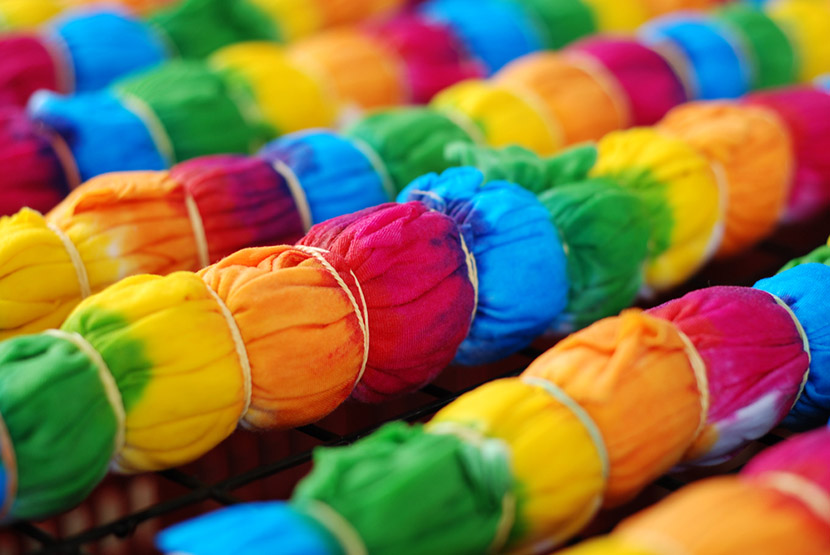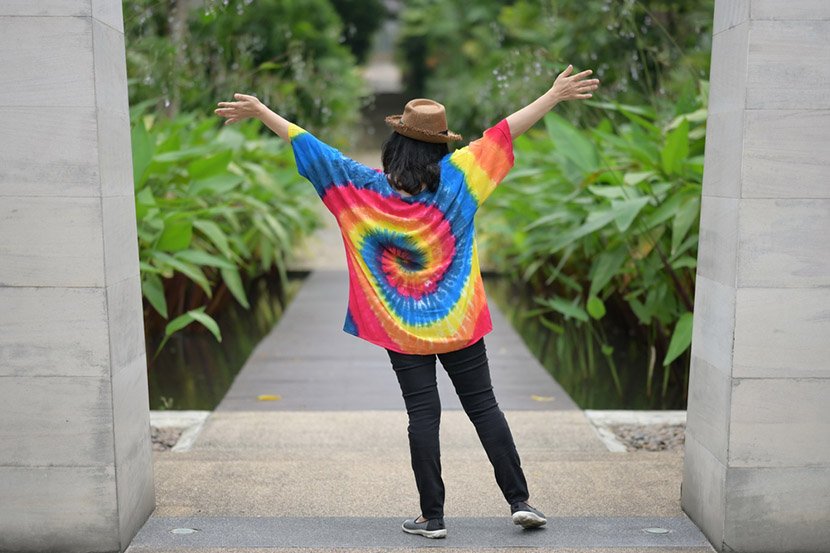How Long Do You Let Tie Dye Sit Before Washing?
You just created a unique rainbow swirl on your tie-dye 1-dollar T-shirt or wholesale hoodie, and you’re wondering how long you should let the dye sit before washing it off. If you wash it too soon, the colors could come out with the wash. If you wait too long, the dye could dry up, leading to uneven coloration. So, how long do you let tie dye sit?
Keep reading to find out what happens to dye when it comes into contact with fabric and how long you should let different tie-dye projects sit before washing them with water.

Source: Artist Photographer 3D/shutterstock.com
The Amount of Time You Should Let Tie Dye Sit
The average amount of time to let tie-dye projects sit before washing them out is between eight and 24 hours. However, different dyes will require different resting periods. The resting period of the tie dye is meant to give the dye enough time to react with the fibers of your clothing.
Ensure that as the dye sits and soaks into the fabric, the piece remains damp and in its original shape, e.g. scrunched, tied, or twisted. If you handle the clothing carelessly, the rainbow-hued patterns that you majestically created could bleed or blur out.
The Resting Period of Different Types of Dyes
The most significant factor that determines how long you allow your freshly dyed garment to sit is the type of dye you use. The great news is that all dyes have directions for application, resting and washing on their package. All you need to do is follow the instructions on the package carefully to create a tie-dye masterpiece out of your white T-shirt.
To make work easier for you, we have prepared a guide on the different resting periods for different tie-dyes. Check them out below.

Source: P-fotography/shutterstock.com
Fiber-Reactive Tie Dye
If you are working with a fiber-reactive tie-dye, we recommend giving your garment a resting period of about four to 24 hours. If you want a maximum saturation of colors, we recommend waiting for the 24-hour mark before washing the piece. If you prefer a light-colored design, then rinse after four hours.
Fiber-reactive dyes work by bonding with the cellulose molecules in the fabric and forming strong covalent bonds. These bonds form between the fibers of the garment’s fabric and the color particles. This results in a vibrant colorful fabric.
All-Purpose Dye
Most tie dyes that use all-purpose dyes require little to no resting period, which results in less vibrant colors. All-purpose dyes are made by blending different types of dyes, e.g. acid dyes and direct dyes. All-purpose dyes are suitable for almost all kinds of fabrics except synthetic fabrics, such as polyester.
When using all-purpose dye to tie dye your cloth, let your garment sit inside the dye bath for about 10 to 30 minutes. Then, proceed to wash.

Source: NPvancheng55/shutterstock.com
Disperse Dyes
Tie dye made from a dispersed dye solution requires between four to 24 hours to sit before washing with water. Unlike all-purpose dyes, disperse dyes are the only coloring agents that work great on synthetic materials such as polyester.
The plastic fibers in the polyester will bond with the color particles. This bonding happens through chemical and heat reactions. The boiling water you use activates the color bonding process in polyester clothes. The only downside to the procedure is that you can only create a single tie-dye color using disperse dyes.
Acid Dyes
Although tie-dyes made from acid dyes do not need any resting period, you will need a longer dyeing session for the best results. Just like disperse dyes, acid dyes also require a hot dye bath for silk and wool fabrics. We recommend adding a touch of vinegar to the boiling dye bath to activate the bonding between the color particles and the protein fibers in the wool and silk materials.
Once you have soaked your cloth in the tie-dye bath, do not let it sit. Simply place the cloth into a basin, add hot water and wash the clothing with soap.
Final Thoughts
No matter what kind of product you are dyeing, it’s important to make sure your colors sit before washing. Determine what kind of dye and fabric you are using to ensure the resting period is optimal for the combination!


